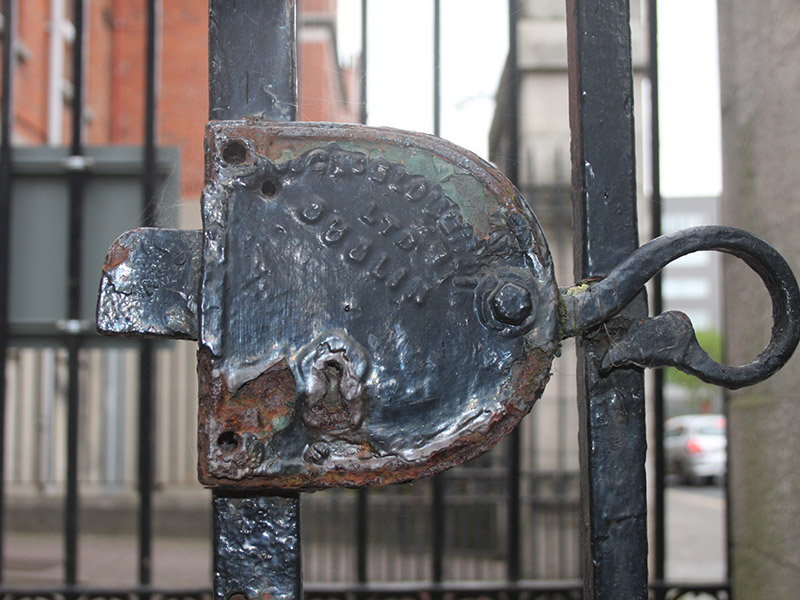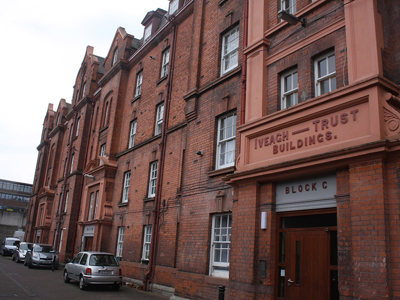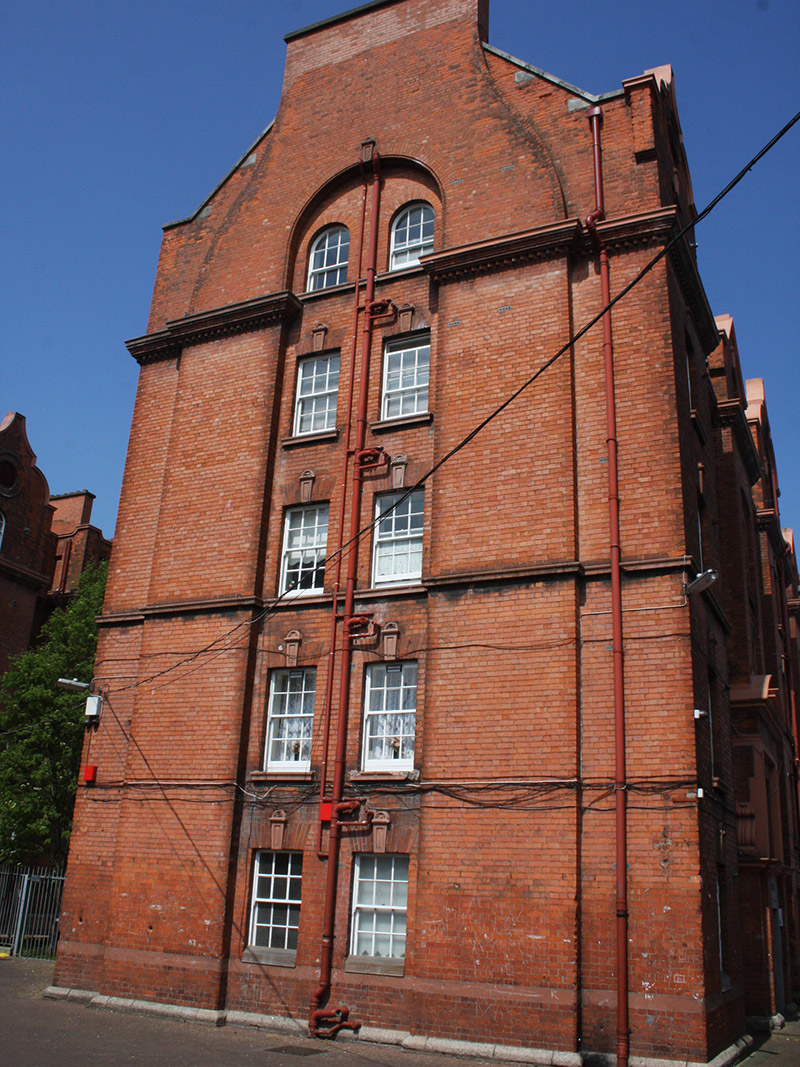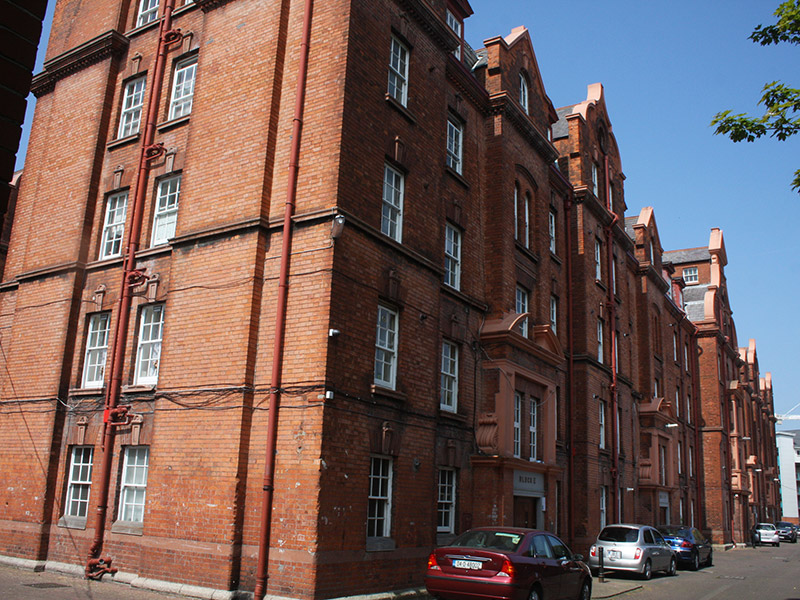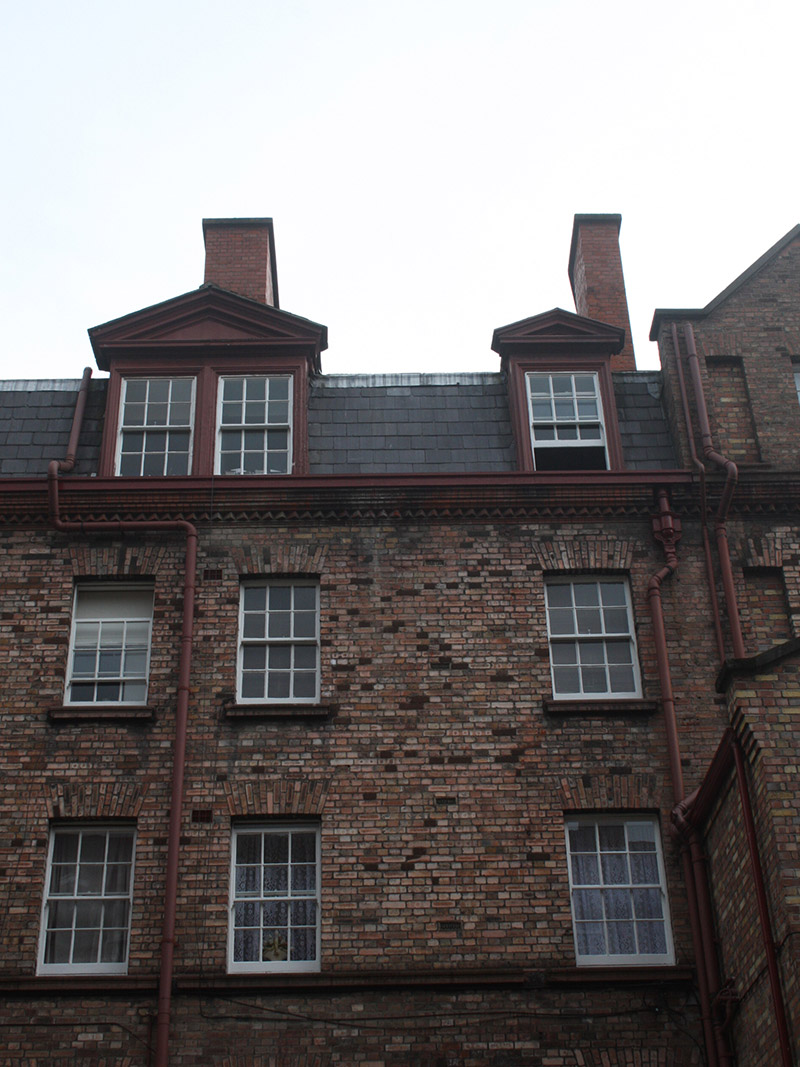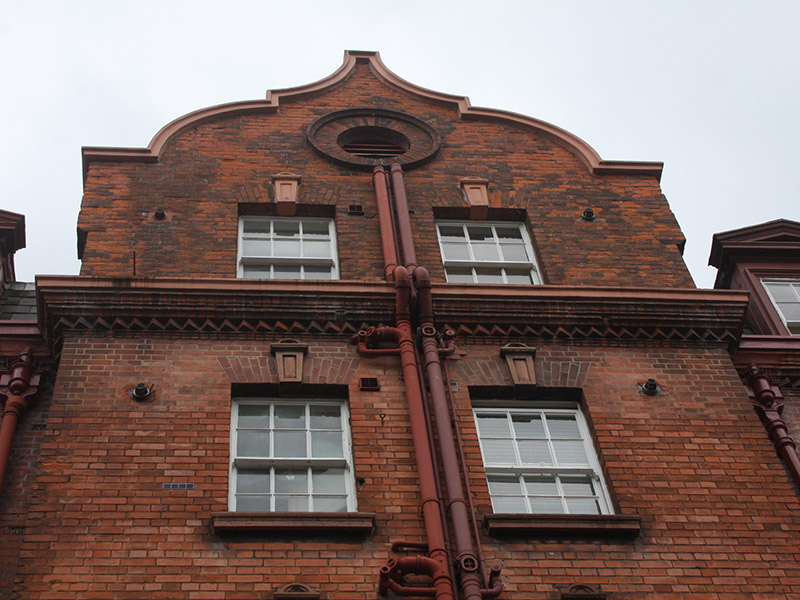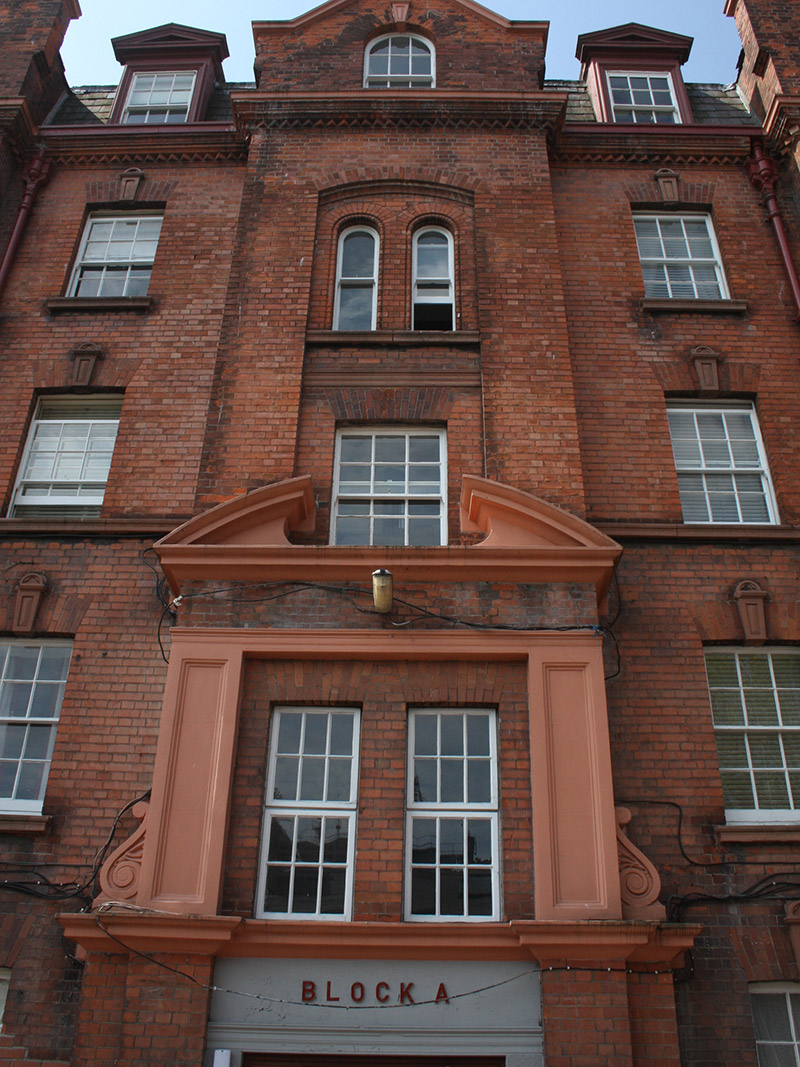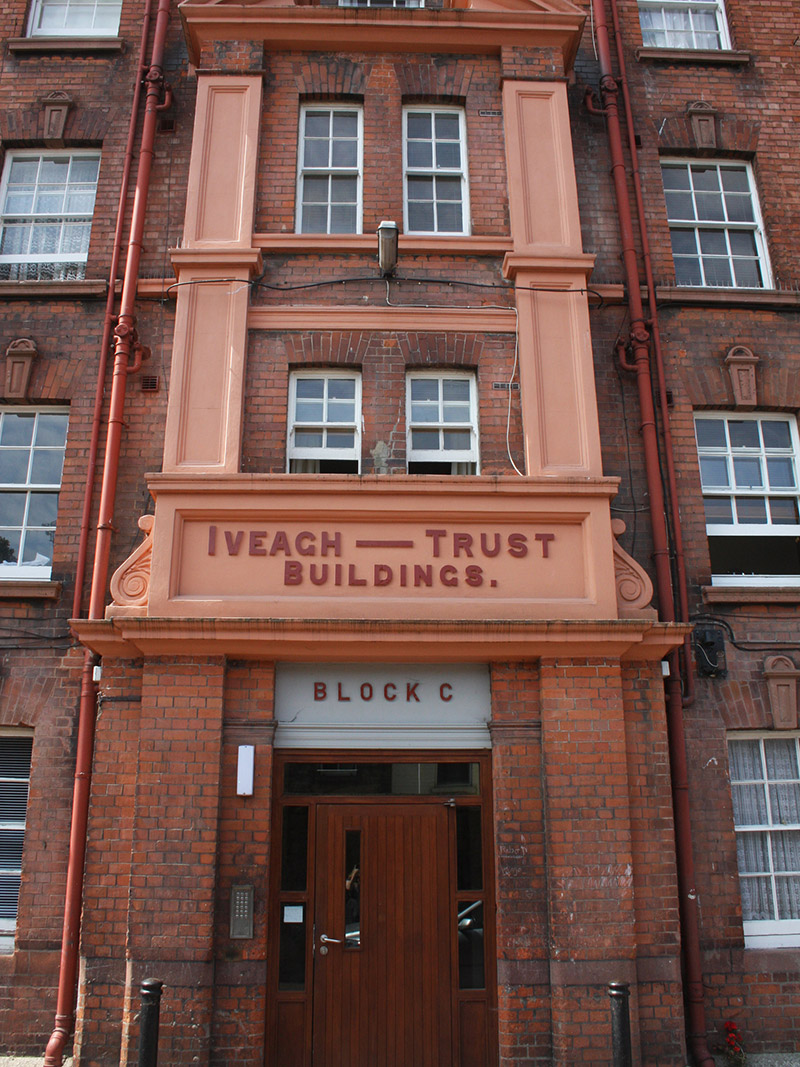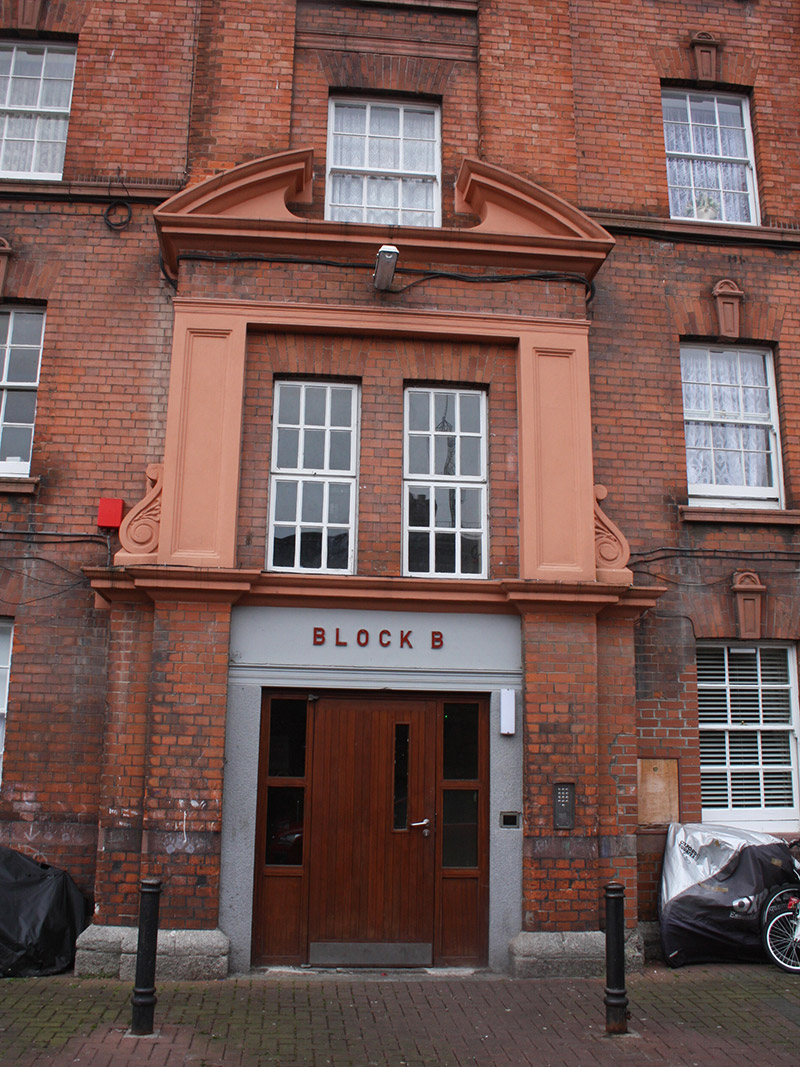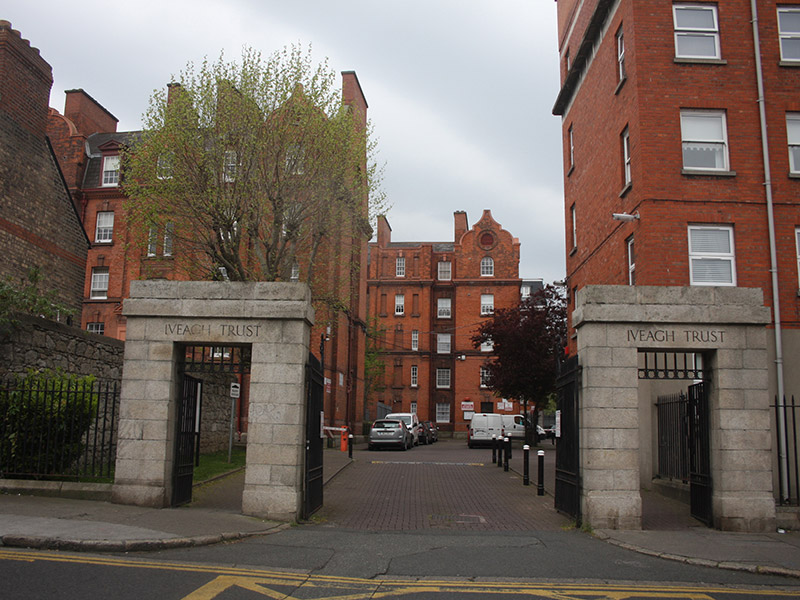Survey Data
Reg No
50110031
Rating
Regional
Categories of Special Interest
Architectural, Artistic, Historical, Social
Original Use
Apartment/flat (purpose-built)
In Use As
Apartment/flat (purpose-built)
Date
1890 - 1900
Coordinates
315315, 233226
Date Recorded
30/04/2017
Date Updated
--/--/--
Description
Detached five-storey block of flats, built c. 1895, having symmetrical twenty-five bay front (west) elevation and twenty-six bay rear, and having two-bay short elevations. Comprises five sub-blocks (A-E), middle block having three-bay breakfront and other blocks having single-bay breakfronts, all flanked by further bays, each half of front elevation being mirror image of other. Curvilinear gables to middle breakfront and to two-bay projections closer to each end. Other four entrance projections and end bays having triangular gables. Rear elevation flush except for middle four bays (corresponding to three-bay breakfront of front elevation) and with pitched roof three-storey return to other blocks. Pitched slate roof with terracotta ridge tiles and copings, sixteen long red brick chimneystacks at right angle to ridge, and with dormer windows between gabled bays. Terracotta cornice with sawtooth brick course forming sill course to top floor windows. Some cast-iron rainwater goods. Red brick walling to front and pinker brick to rear, laid in English bond, with platband to ground floor sill level, at front and granite plinth course. Round-headed window openings to triangular gables and square-headed elsewhere, with timber sliding sash frames, mainly six-over-six pane, except for six-over-three pane to round-headed windows. Double one-over-one pane to third floor of same and double six-over-six pane to first floor of same. Breakfront has double two-over-two pane to first floor and double four-over-four pane to second floor of entrance bay and group of three windows to floor. Windows have moulded terracotta sills and keystones. Window bays to short elevations are within round-headed recesses that occupy most of elevations. Moulded terracotta and brick sill course to second floor. Oculus openings to flanking curvilinear gables, with terracotta surrounds. Stepped entrance projections have square-headed doorways with render panels above. Breakfront has three-storey entrance feature and terracotta imposts to doorway. All five entrances have flanking brick pilasters to ground floor and panelled terracotta pilasters above, with terracotta cornices, open-topped segmented pediments and recent timber battened doors. Middle entrance has moulded terracotta plaque with lettering ‘Iveagh Trust Buildings’. Set to east of two similar blocks of flats, built between 1894 and 1901, separated by narrow hard-surfaced yards.
Appraisal
Forming part of a group of early social housing, this impressive building makes an important contribution to the architectural and social history of the area. The façade is articulated and enhanced by interesting decorative brick and terracotta elements. The name plaques that lend contextual, as well as artistic, interest to the composition. The breakfront and projecting stair-halls create an interesting and unusual rhythm. Designed by Robert J. Stirling and erected by Messrs Meade and Co., these flats were constructed as part of an innovative urban project funded by The Iveagh Trust, established by Edward Guinness, the first earl of Iveagh, which sought to improve the living conditions of the poor in the vicinity of St. Patrick’s Cathedral. Older tenements were demolished and social housing built that aimed to provide a better standard of living than the dark and unhygienic tenements. With their lavish fenestration and extensive cast-iron rainwater goods and pipework, the flats were designed with light, ventilation, and cleanliness in mind.
